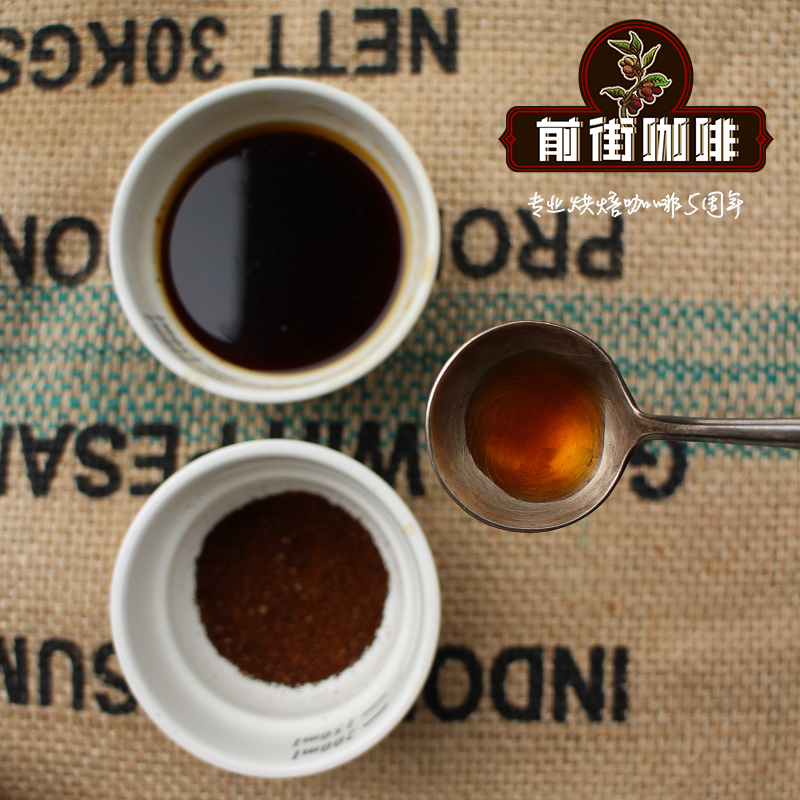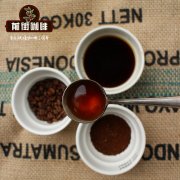What is enzyme anaerobic treatment? Difference of characteristics between Colombian anaerobic treatment and barrel treatment of coffee beans

Professional coffee knowledge exchange more coffee bean information please follow the coffee workshop (Wechat official account cafe_style)
"after picking the fully ripe bright red fruit by hand, sieving out the too small size and rinsing with water, the hypoxia fermentation is carried out in an airtight space, and the fermentation temperature is also controlled at a lower room temperature, that is, making coffee while blowing air conditioning. Soak in clean water for about 72 hours, then dry in the sun. Flat on the sun bed about 1 to 2 layers of thickness, after 21 days of sun exposure, can complete a completely different unique flavor! "
The hidden sentence that is not found in the above paragraph is whether the yeast spread in the environment was captured naturally or screened during the 72-hour fermentation. In fact, in the 2017 + global online label batch, there are as many as five or six items made by Jose Alfredo. Friends who have tried to drink reflect that some of the items have obvious flavor characteristics like bean curd or soy sauce, and it is believed that different fermentation methods have been introduced in the process of post-production.
The Panscience website describes beer yeast as follows: "Beer history has revolutionized since the 15th century, when monasteries in Bavaria began to adopt low-temperature fermentation so that beer could be brewed in winter. From then on, the beer world of Lager and Ale became very different. For example, global sales of Lager Beer reached $250 billion in 2008, and you can hardly find Ayre in convenience stores in Taiwan. The main difference between Rag and Saccharomyces bayanus lies in the fermentation temperature. The former is slightly higher than room temperature after low temperature, because the yeast is different. Eyre uses a mixture of Saccharomyces cerevisiae and Saccharomyces bayanus, which is called Saccharomyces carsbergensis, and also because of the discovery and contribution of biologist Pasteur, also known as Saccharomyces pastorianus. Contemporary Lagar breweries use mixed strains of Pasteuria, including popular brands in continental Europe, North America and Asia, and Taiwan is no exception, while Britain continues the traditional brewing method and is still the stronghold of El and Stout. "
In fact, in the past three years, the global high-end boutique coffee industry has continued to innovate in post-processing methods, which has made washed coffee have a unique fruit flavor in the sun-drying process, while sun-cured coffee has greatly reduced the original criticized over-fermented acidity. These methods to improve the quality of coffee will not only improve the picking quality of pickers and the cleaning and maintenance standards of the treatment plant, but also use specific yeast fermentation.
Up to now, the fermentation methods of coffee beans seen in the market have all emphasized "low temperature fermentation." perhaps the reason is that their environmental yeast belongs to Saccharomyces cerevisiae. However, since these methods are the secret of the treatment plant, which yeasts are used separately? Or have you used El yeast or even lactic acid bacteria to ferment coffee beans? The flavor of the fermented coffee is unknown.
In the future, coffee hunters who travel to and from various producing areas will not only pursue the flavors of various noble varieties, but also understand different post-processing methods, which will be an important basis for improving the diversity and quality of coffee flavors.
Important Notice :
前街咖啡 FrontStreet Coffee has moved to new addredd:
FrontStreet Coffee Address: 315,Donghua East Road,GuangZhou
Tel:020 38364473
- Prev

The fourth wave of coffee has arrived. Coffee has four trends. Future development trend of coffee.
Professional coffee knowledge exchange more coffee bean information please follow the coffee workshop (Wechat official account cafe_style) what is the coffee trend (revolution)? There are a total of three waves: the first wave (1940-1960): the "first wave" of instant coffee before and after World War II, instant coffee (and Robasta beans) prevailed, the poor quality led to the consumption of coffee, and in order to keep down the cost.
- Next

Kaduai Coffee Variety introduction what are the characteristics of Kaduai coffee? How about Kaduai coffee?
Professional coffee knowledge exchange more coffee bean information please pay attention to the coffee workshop (Wechat official account cafe_style) Kaduai is also an Arabica mixed race, is a mixed race of Mundo Novo Monowood (New World) and Caturra Kaddura, has a good ability to resist natural disasters, especially wind and rain resistance, it inherited the advantage of Kaddura's low height, a change of Mondono
Related
- Beginners will see the "Coffee pull flower" guide!
- What is the difference between ice blog purified milk and ordinary milk coffee?
- Why is the Philippines the largest producer of crops in Liberia?
- For coffee extraction, should the fine powder be retained?
- How does extracted espresso fill pressed powder? How much strength does it take to press the powder?
- How to make jasmine cold extract coffee? Is the jasmine + latte good?
- Will this little toy really make the coffee taste better? How does Lily Drip affect coffee extraction?
- Will the action of slapping the filter cup also affect coffee extraction?
- What's the difference between powder-to-water ratio and powder-to-liquid ratio?
- What is the Ethiopian local species? What does it have to do with Heirloom native species?

